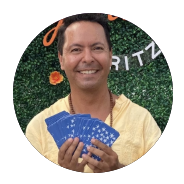Our deepest wounds are often carried by the child within us—the part of our being that experienced the world in its purest form but also bore the weight of trauma too heavy for young shoulders. Inner Child Work is the process of reconnecting with this part of ourselves, understanding its pain, and nurturing it with the love and care it may never have received.
For many, unraveling the knots of childhood trauma starts here. Whether it was emotional neglect, physical punishment, or events beyond your control, the echoes of these experiences continue to shape how you think, feel, and interact with the world.
By healing your inner child, not only can you free yourself from destructive patterns, but you can also discover a deeper connection to your true self—one that is rooted in safety, creativity, and self-compassion.
What is Inner Child Work?
Inner Child Work involves recognizing the wounded, childlike aspect of yourself and offering it healing. This practice isn’t about dwelling on the past but about addressing the emotional and energetic imprints left behind by painful experiences.
Your inner child represents your younger self—the part of you that once felt joy, curiosity, and innocence. However, life may have introduced pain and fear, causing your inner child to retreat and leaving you with lingering wounds that show up as depression, anxiety, anger, or even physical ailments.
Reconnecting with your inner child means forging a relationship built on trust, reassurance, and nurture. Through this process, you can release what no longer serves you, unravel limiting beliefs, and regain the sense of wonder you once had.
Why is Inner Child Work Important?
When we don’t acknowledge our inner child, they remain stuck in pain—fueling unhealthy patterns in our adult lives. These patterns often emerge as self-sabotage, low self-esteem, struggles with relationships, or feelings of being “stuck.”
Inner Child Work helps you:
- Heal Traumas: Address emotional blockages and unresolved feelings from painful events.
- Break Patterns: Stop repeating cycles of behavior that stem from childhood wounds.
- Reclaim Joy: Reconnect with your playful, creative, and imaginative side.
- Foster Self-Love: Learn to nurture and care for yourself as an adult while reparenting your inner child.
When these wounds heal, they unlock the wholeness of your authentic self, enabling profound transformation in your mental, emotional, and even physical well-being.
Recognizing Childhood Trauma
Childhood trauma exists on a spectrum. For some, it might be blatant abuse, while for others, it could be smaller, repeated instances of neglect or humiliation. Here are common experiences that may impact your inner child:
- Emotional unavailability from parents or guardians.
- Physical punishment (e.g., being hit, shaken, or burned).
- Humiliation or verbal denigration.
- Witnessing conflict or enduring the fallout of divorce.
- Experiencing abandonment or neglect.
- Being forced into adult responsibilities at a young age.
- Exposure to sexual abuse or inappropriate behaviors.
Even seemingly minor experiences, like frequently being called names or facing excessive demands, can leave deep scars. Recognizing these events is the first step to healing.
Five Exercises to Heal Your Inner Child
1. Speak to Your Inner Child
Start a dialogue with your inner child. This could be out loud, in your thoughts, or through journaling. Acknowledge their presence and express support. Some affirmations to get you started:
- “I see you. I’m here for you.”
- “You’re safe now, and I love you.”
- “I forgive you, and I hope you can forgive me too.”
Write a letter to your younger self or ask them directly how they feel. Note their responses, even if felt intuitively.
2. Mirror Work
Stand in front of a mirror, look into your eyes, and place a gentle hand on your heart. Speak kind, nurturing words to your reflection. This exercise may feel vulnerable, but it’s an intimate way to connect with your inner child.
If you feel emotions rising—like sadness or anger—give yourself permission to feel them fully. End the practice by holding yourself in love and kindness.
3. Revisit Your Childhood Passions
What brought you joy as a child? Was it drawing, dancing, climbing trees, or playing with toys? Reintroduce those activities into your life in small, meaningful ways.
These moments of playfulness and creativity help you reconnect with the lighthearted, magical aspects of your inner child.
4. Visualization Journeys
Create a “safe space” in your mind—a cozy garden, a beach, or any place where you feel protected. Imagine meeting your inner child there.
- Kneel to their height, hug them (if they are ready), and ask, “What do you need most from me right now?”
- Listen without judgment—your inner child’s needs might surprise you.
End your visualization with gratitude, promising them you’ll return when they call.
5. Reparenting Yourself
Inner Child Work often involves giving yourself what you didn’t receive growing up. This means:
- Encouraging yourself when you feel doubt.
- Setting healthy boundaries to create a sense of safety.
- Rewarding yourself for achievements, big or small.
- Creating a bedtime routine or cozy rituals that remind you of care and nurture.
Become the loving, supportive parent your inner child never had.
Remember, Healing Takes Time
The inner child is a tender part of your soul, and like relationships with others, rebuilding trust with yourself will take time. Gentle consistency and love are key.
Working with your inner child might bring up unexpected emotions—it’s okay to feel overwhelmed. If this happens, seek support from a therapist, counselor, or spiritual guide who specializes in trauma healing.
Through patience and dedication, you can form a lifelong bond with your inner child, unlocking joy, curiosity, and profound healing.
Take the Next Step
Healing your inner child is one of the most profound gifts you can give yourself. By integrating their wisdom and addressing wounds from the past, you can transform old patterns and reconnect with the vibrant, authentic self that still resides within.
Have you spoken to your inner child before? What do you think they may want to tell you? Take a moment to reflect on this and consider starting your Inner Child Work today.
Your path to freedom starts with nurturing the child within.















